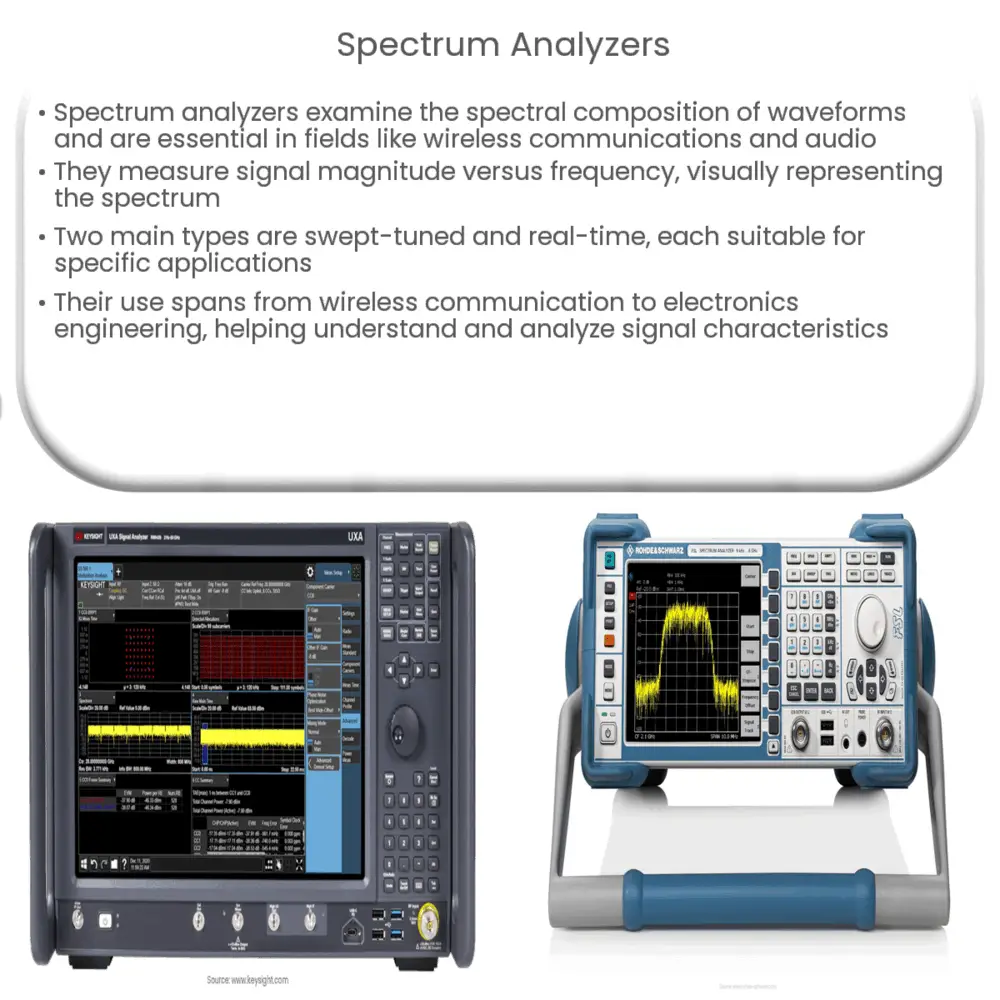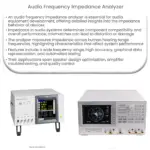Explore the fundamentals of spectrum analyzers, their types, applications in various fields, and key features, enhancing your understanding of signal analysis.

Spectrum Analyzers: An Overview
A spectrum analyzer is a device that’s used to examine the spectral composition of electrical, acoustic, or optical waveform. They are commonly used in various fields including wireless communications, audio, and electronics.
Understanding Spectrum Analyzers
At its core, a spectrum analyzer measures the magnitude of an input signal versus frequency. The ‘spectrum’ in the name refers to the range of frequencies that the device can analyze. It displays these frequencies on a graph, revealing details about the intensity of different frequency components.
- Frequency: This is the number of times that a wave occurs for a set duration. In a spectrum analyzer, frequency is typically measured in Hertz (Hz).
- Magnitude: This refers to the size or quantity of a particular feature. For a wave, the magnitude is its amplitude.
Importantly, a spectrum analyzer can analyze the properties of different signals on these two dimensions, providing a visual representation of the signal’s spectrum.
Types of Spectrum Analyzers
There are two primary types of spectrum analyzers, each with its unique method of operation:
- Swept-tuned spectrum analyzer: This type of analyzer essentially “sweeps” through a range of frequencies, measuring one frequency at a time and then displaying the frequencies as a function of time. It offers excellent frequency resolution and a wide frequency range, making it suitable for analyzing high-frequency signals such as those used in radio communications.
- Real-time spectrum analyzer: Unlike swept-tuned analyzers, a real-time spectrum analyzer can simultaneously process all frequencies in its range. This enables it to capture intermittent and rapidly occurring events that a swept-tuned analyzer might miss. However, its frequency range and resolution are generally more limited.
These two types of spectrum analyzers have different strengths and are used in different applications. Choosing the right one depends on the specific needs of the user.
Applications of Spectrum Analyzers
Spectrum analyzers find applications in several fields where signal quality and integrity are important. Some of these include:
- Wireless Communication: Spectrum analyzers are used to design, test, troubleshoot, and repair electronic equipment in the wireless communication industry. They help identify problems, such as weak signals or interference, which can negatively affect the performance of communication systems.
- Audio Production: In audio production, spectrum analyzers allow engineers to visualize and adjust the frequencies of audio signals. This can help ensure a balanced mix, leading to better sound quality.
Additional Applications of Spectrum Analyzers
In addition to the mentioned applications, spectrum analyzers are also used in the following areas:
- Electronics Engineering: Spectrum analyzers play a crucial role in electronics engineering where they are used to measure the frequency response, noise and distortion characteristics of various electronic devices.
- RF and Microwave Systems: In RF and microwave communication systems, spectrum analyzers are used to measure signal distortion, modulation, spectral purity, and other parameters that are critical to the performance of these systems.
- Education and Research: In academia, spectrum analyzers are used for teaching and research purposes. They are instrumental in helping students understand and explore the characteristics of different signals.
Spectrum Analyzer Features and Specifications
When selecting a spectrum analyzer, there are several key specifications and features to consider:
- Frequency Range: This specifies the range of frequencies the analyzer can measure. It’s typically the first specification considered when choosing a spectrum analyzer.
- Resolution Bandwidth (RBW): RBW is the smallest frequency span the analyzer can resolve. A lower RBW allows for more precise measurements, but it also means a slower sweep time.
- Sensitivity: This refers to the analyzer’s ability to detect weak signals. It’s particularly important when measuring low-level signals close to the noise level.
Conclusion
Spectrum analyzers are an indispensable tool in various fields, from wireless communications to audio production and electronics engineering. They provide a detailed view of a signal’s spectral content, enabling users to measure and analyze a range of signal characteristics. As technology continues to advance, the capabilities of spectrum analyzers will likely expand, making them even more valuable in signal analysis and telecommunications. Whether you’re a seasoned engineer, a researcher, or a student, understanding the workings and applications of spectrum analyzers can provide valuable insights into the fascinating world of signal analysis.



